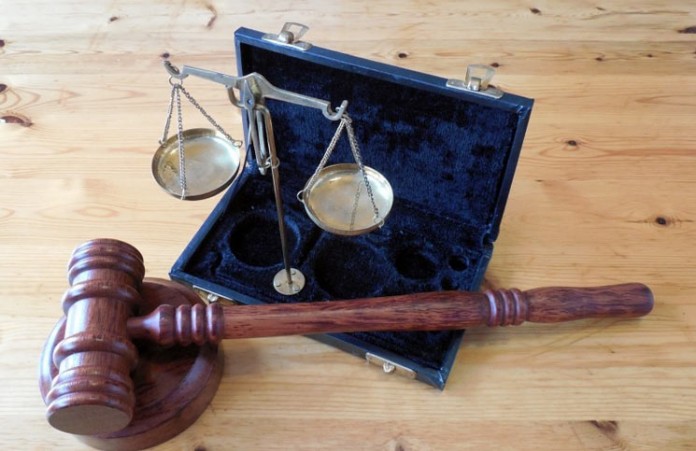In this blog post, Arushi Chandak, a student pursuing her 2nd Year Student, BA.LLB. (Hons.) from Symbiosis Law School, Pune, and a Diploma in Entrepreneurship Administration and Business Laws from NUJS, Kolkata, describes the different Industrial Dispute Settlement Machineries.
A characteristic feature of society is a dispute. This is even more apt for an industrial society where conflict regularly takes place. The biggest conflict of these is that between the capital and labour. While it is possible to reduce and mitigate them, it is not practically possible to eliminate them. Each has their own demands and wants that they want to be fulfilled. The inherent inequality of an employment relationship places more power in the hands of employers and thus the question of distribution of the social product that is the outcome of the common effort of employers and workmen, the issue of the job security that is vital to an employee along with the growing yet constant urge of the workmen to climb the success ladder are some of the important factors that give rise to disputes in any industrial organization. Therefore, industrial disputes are those which arise between an employer or an employer’s organisation on the one hand and the workmen or trade unions of workmen on the other hand. These are on matters relating to an employer-employee relationship.
It has been said by Mr Justice Higgins that “the war between the profit maker and the wage earner is always with us; i.e., the war between those who argue for more investment and those who argue for a maintained or improved standard of living now.”[1]
In view of this, the Industrial Disputes Act, 1947 provides for four major industrial dispute settlement machinery:
- Conciliation
- Court of Inquiry
- Voluntary Arbitration
- Adjudication
Conciliation
Conciliation, a form of mediation refers to the act of making a passive and indirect effort in order to bring two conflicting parties to a compromise. It is the “practice by which the services of a neutral party are used in a dispute as a means of helping the disputing parties to reduce the extent of their differences and to arrive at an amicable settlement of agreed solution.”
The conciliator or mediator tries to remove the difference between the parties by persuading the parties to rethink over the matter with a give and take the approach but does impose his or her own viewpoint. The conciliator is at liberty to change his or her approach from case to case as he or she deems fit depending on other factors.
The Industrial Disputes Act, 1947 provides for conciliation, and can be utilised either by the appointment of conciliation officers; permanently or for a limited period or via the constitution of a board of conciliation. This conciliation machinery is at liberty to either take note of the dispute or apprehend dispute on its own or when approached by a party.
In order to expedite proceedings, time-limits have been prescribed. It is 14 days in the case of conciliation officers and 2 months for a board of conciliation. The settlement so arrived upon during the course of conciliation is binding upon the parties for the period that has been agreed upon by the parties or for the period of 6 months. It shall continue to be binding until revoked by either of the parties. During the pendency of the conciliation proceedings, before a Board and for seven days after the conclusion of such proceedings, the Act prohibits strike and lock-out.
Conciliation Officer:
Under Section 4 of the Industrial Disputes Act, 1947, the appointment of a such number of persons as is deemed fit by the appropriate government is provided for. This is with reference to the relevant jurisdiction in which the dispute falls.
For undertakings that employ 20 or more persons, the Commissioner/ Additional Commissioner/ Deputy Commissioner is appointed as the Conciliation Officer. But at the State level, some officers from the Central Labour Commission office are appointed as conciliation officers, in the case of Central Government. The conciliation officer enjoys the powers of a civil court, and he is expected to give a judgment within 14 days of the commencement of the conciliation proceedings. This judgement that is given by him is binding upon the parties to the dispute.
Board of Conciliation:
In case Conciliation Officer fails to resolve the differences between the parties, the government has the discretion to appoint a Board of Conciliation. The Board is tripartite and ad hoc body, consisting of a chairman and two or four other members.
The administrator is to be an autonomous individual, and different individuals are assigned in equivalent number by the Board tin view of the question. Conciliation procedures before a Board are like those that may occur before the Conciliation Officer. The Government has yet another choice of alluding the proceedings to the Court of Inquiry rather than the Board of Conciliation.
The apparatus of the Board is gotten under way when a debate alludes to it. As it were, the Board does not hold the pacification procedures voluntarily. On the debate being alluded to the Board, it is the obligation of the Board to do all things as it supposes fit with the end goal of initiating the gatherings to go to a reasonable and neighbourly settlement. The Board must present its answer to the legislature inside two months of the date on which the debate alluded to it. This period can be further stretched out by the administration by two months.
Court of Inquiry
If there should be an occurrence of the disappointment of the conciliation procedure to settle a question, the administration can choose a Court of Inquiry to enquire into any matter associated with or significant to debate. The court is mandated upon to present its report inside of six months and may comprise of at least one people to be chosen by the proper government.
The court of enquiry is required to present its report inside a time of six months from the initiation of enquiry. This report is therefore distributed by the administration within 30 days of its receipt. Not at all like amid the time of pacification, labourers’ entitlement to strike, businesses’ entitlement to a lockout, and bosses’ entitlement to reject labourers, and so forth stay unaffected amid the procedures in a court to an enquiry.
A court of enquiry is different from a Board of Conciliation. While the Board’s basic objective is to promote the settlement of an industrial dispute, a court of enquiry is primarily fact-finding machinery that aims at inquiring into and revealing the causes of an industrial dispute.
Voluntary Arbitration
On the disappointment of placation procedures, the conciliation officer may persuade the parties to refer the dispute to a voluntary arbitrator wherein the arbitrator alludes to getting the question settled since he is an autonomous individual picked by the parties included commonly and willfully.
As such, assertion offers an open door for an answer of the debate through an authority together delegated by the gatherings to the question. The procedure of intervention spares time and cash of both the gatherings which is generally squandered if there should be an occurrence of settling.
This form of voluntary arbitration became a popular method a settling differences between workers and management due to the advocacy of Mahatma Gandhi, who had himself applied it extremely effectively and successfully in the Textile Industry of Ahmedabad. However, voluntary arbitration received legal identity only in 1956 when the Industrial Disputes Act, 1947 was amended in order to include a provision relating to it.
This provision for voluntary arbitration was provided keeping in mind the lengthy legal proceedings and formalities and resulting delays that is involved in adjudication. But it is pertinent to note that the arbitrator is not vested with any judicial powers. He only derives his powers to settle the dispute at hand from the agreement entered into by the parties of opting to refer the dispute to the arbitrator. The arbitrator is required to submit his award to the government who shall then publish it within 30 days of such submission, and the award shall be enforceable only upon the expiration of 30 days of its publication.
Intentional intervention is one of the most democratic ways for settling industrial disputes and conflicts. It is the best technique for determining modern clashes and is a reasonable and fair supplement to aggregate bartering. It not just gives an intentional technique for settling industrial disputes, but on the other hand is a faster method for settling them.
This is because it depends on the idea of self-government in industrial disputes. Moreover, it abridges the extended procedures orderly on arbitration, suggests a solid demeanour and a created viewpoint; helps with fortifying the exchange union development and contributes for working up sound and cheerful modern relations.
Adjudication
A definitive solution for the settlement of industrial disputes is its reference to arbitration by a labour court or tribunals when conciliation fails to achieve a settlement with respect to the dispute or conflict. Arbitration comprises of settling debate through intercession by the outsider delegated by the legislature. The law gives the mediation to be directed by the Labour Court, Industrial Tribunal of National Tribunal.
A debate can have alluded to arbitration if the business and the recognised trade union consents to do as such. A question can likewise be alluded to arbitration by the Government regardless of the possibility that there is no consent of the parties in which case it is called ‘mandatory arbitration’. As has been mentioned before, the dispute may be referred to any of three sorts of tribunals relying upon the nature and certainties of the question in inquiries. This include:
(a) Labour courts,
(b) Industrial tribunals, and
(c) National tribunals.
The procedure, powers, and provisions with respect to the beginning of the award and time of operation of an award of these three bodies are comparable and similar. The first two bodies may be set up either by any State Government or by the Central Government. However the National Tribunal may be set up only by the Central Government when it believes that the adjudication of a dispute is of national significance. These three bodies are hierarchical in nature, and it is the Government’s privilege to refer a question or dispute or conflict to any of these bodies relying upon the nature of the conflict or dispute.
Thus, there exist several statutory ways to deal with Industrial Disputes and have been elucidated upon above.
Reference:
[1] Kahn-Freund, Labour Relations and the Law (1983) (3rd ed.) (London, Stevens)
 Serato DJ Crack 2025Serato DJ PRO Crack
Serato DJ Crack 2025Serato DJ PRO Crack










 Allow notifications
Allow notifications



